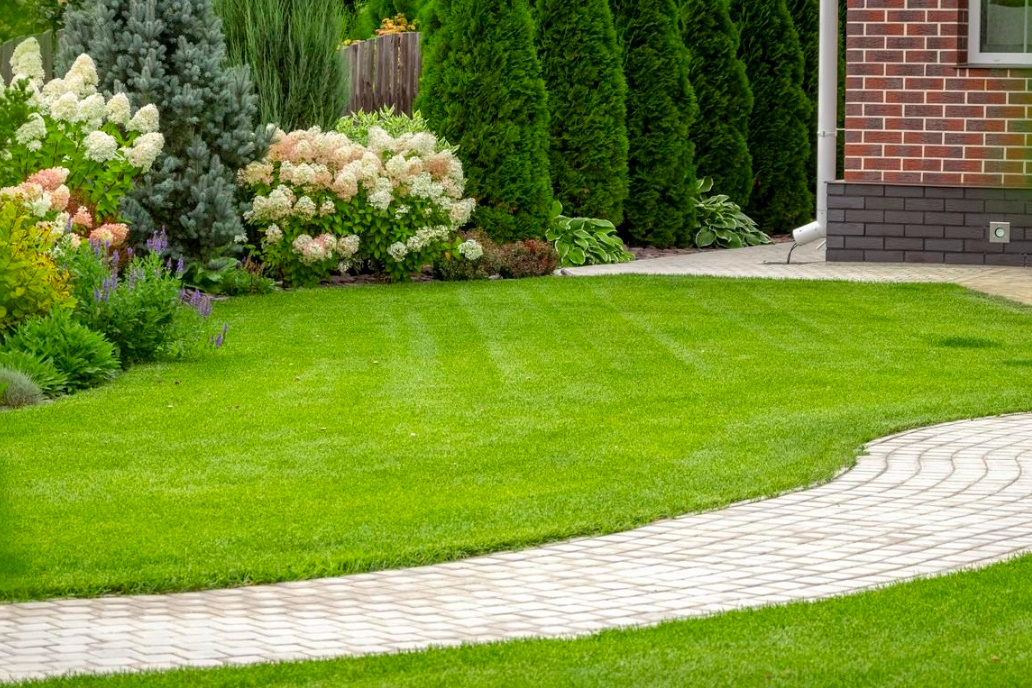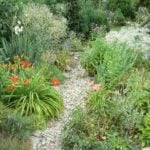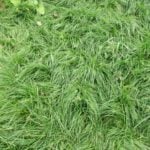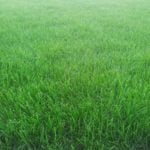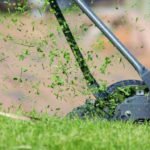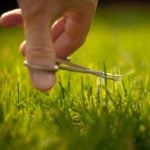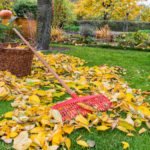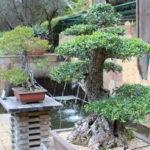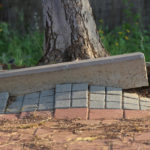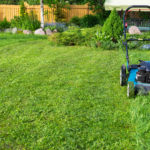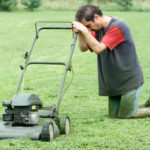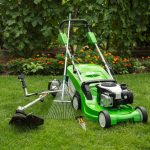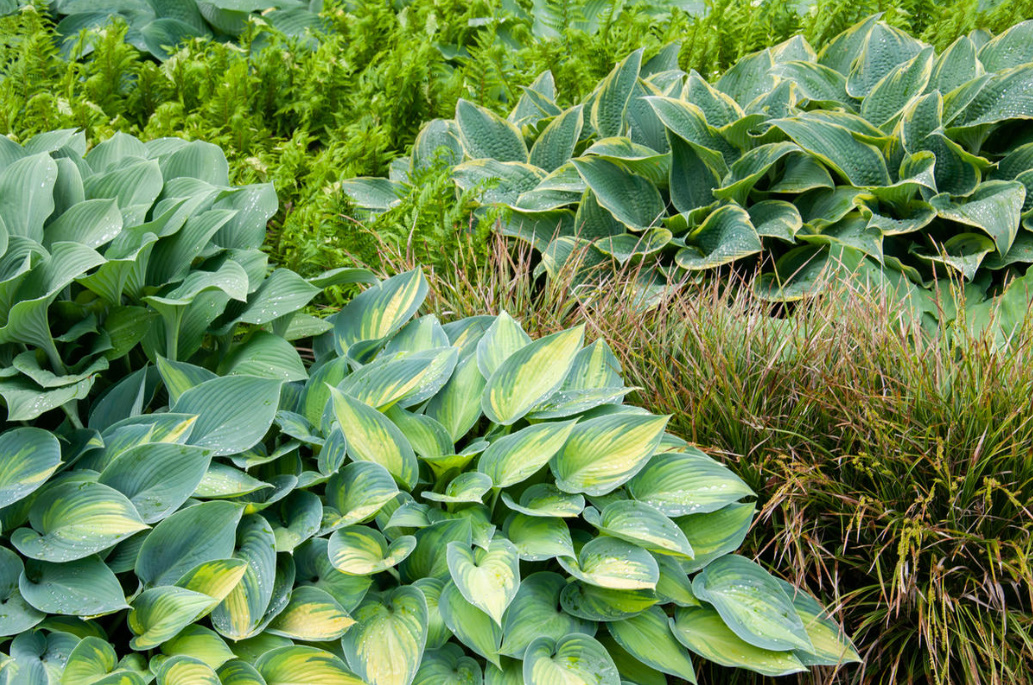Additional procedures
Under certain conditions (heavy soil, age-related lawn, weather conditions, etc.), the lawn may require aeration, scarification, sanding or earthing.
Aeration
This is the piercing of the turf in order to improve air exchange, moisture and nutrients. It is usually carried out in spring and autumn. On a lawn with dense turf, aeration may be necessary during prolonged rains (during breaks), stimulating faster penetration of moisture deep into the soil and eliminating its stagnation on the surface. The lawn is pierced with pitchforks, with the help of special nozzles on shoes or with a mechanical roller with spikes.
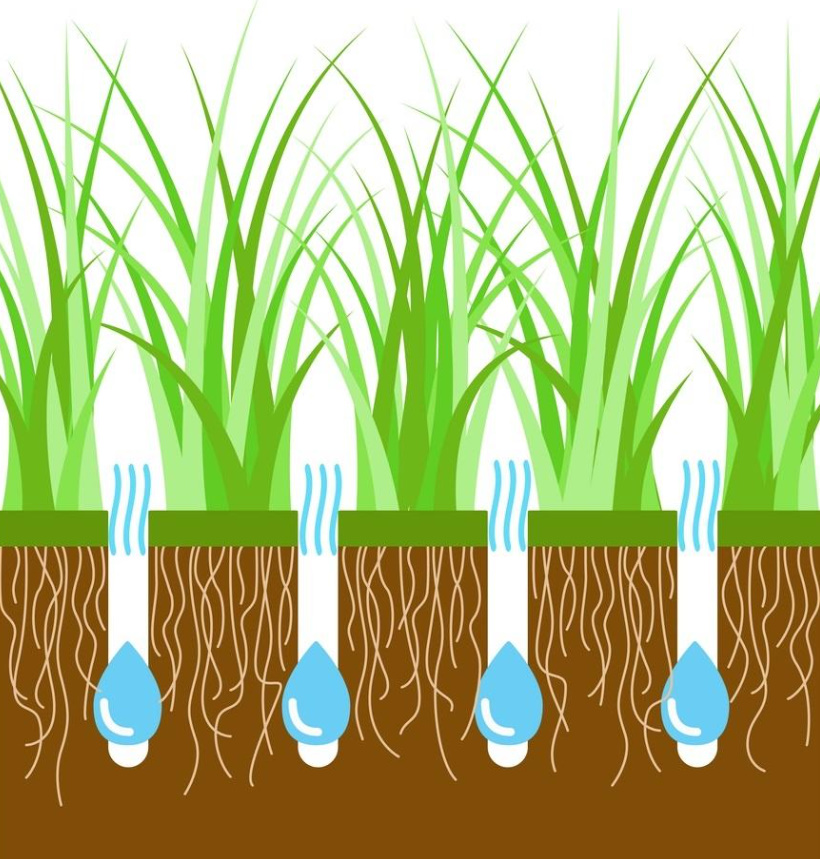
More advanced gardeners or those who have lawns that occupy a large area of the plot, purchase an electric or gasoline aerator for this procedure. This tool pierces the turf with tubes that take out small earthen columns from the top of the cover along with part of the roots. There are noticeable holes on the ground in places of punctures. Do not confuse the aerator with the scarifier (verticutter). The latter has knives as the working part, and it leaves traces in the form of small grooves. Read more about it below.
Scarification
Another important spring procedure is scarification. Need — only once a year. It is better to carry out it with the help of a special tool — a scarifier (aka a verticutter), which removes old grass, moss and prunes part of the roots, stimulating their growth. After the procedure, the soil becomes looser, the herbaceous cover forms a strong root system.
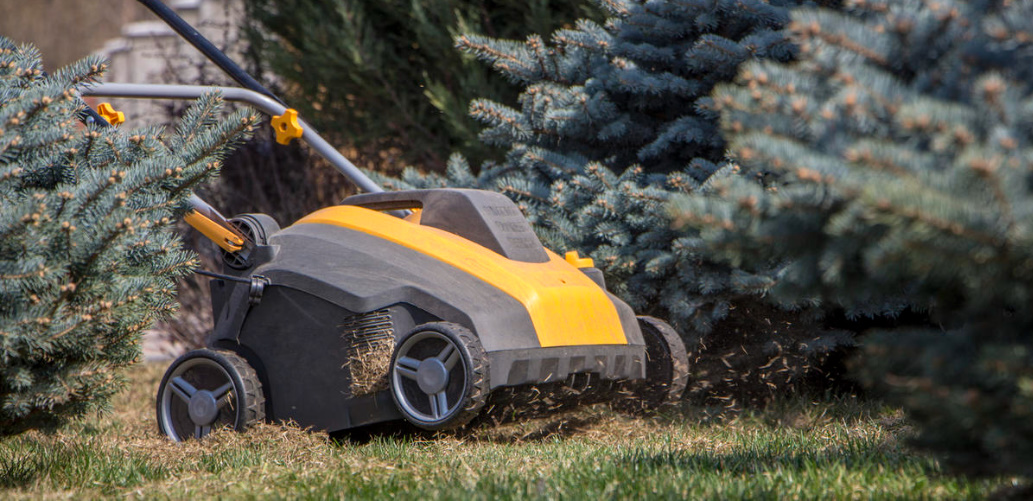
Sand and land use
Sanding is designed to combine the functions of fertilizing and improving the air regime of the soil. As a result, small irregularities on the lawn are smoothed out, and the turf becomes stronger (not to be confused with the density that prevents the penetration of moisture) and thicker. The procedure is carried out every 3-4 years, in June-July, when the herbs are full of strength. A mixture of river sand, peat and humus (4:2:1 or 4:1:1) is distributed over the surface of the lawn and leveled. Only sand can be used on clay soils.
Features of the choice of lawn mowing equipment
Not all lawn mowers can provide a large haircut height, which is needed at the first spring mowing (8-9 cm). A trimmer will help here. Such a tool will cope with trimming the edges of the lawn, cutting grass in hard-to-reach places, under a bench or where it is too narrow to pass with a lawn mower. The Husqvarna 128R petrol lawn mower with a semi-automatic trimmer head can perform all these tasks. And if you put a four-bladed knife on this unit (included as standard), then it will easily cut off any grass with stiff stems. Such a wide functionality is very important, because on or near our sites there are zones where “uncultured” vegetation grows up to half a meter.
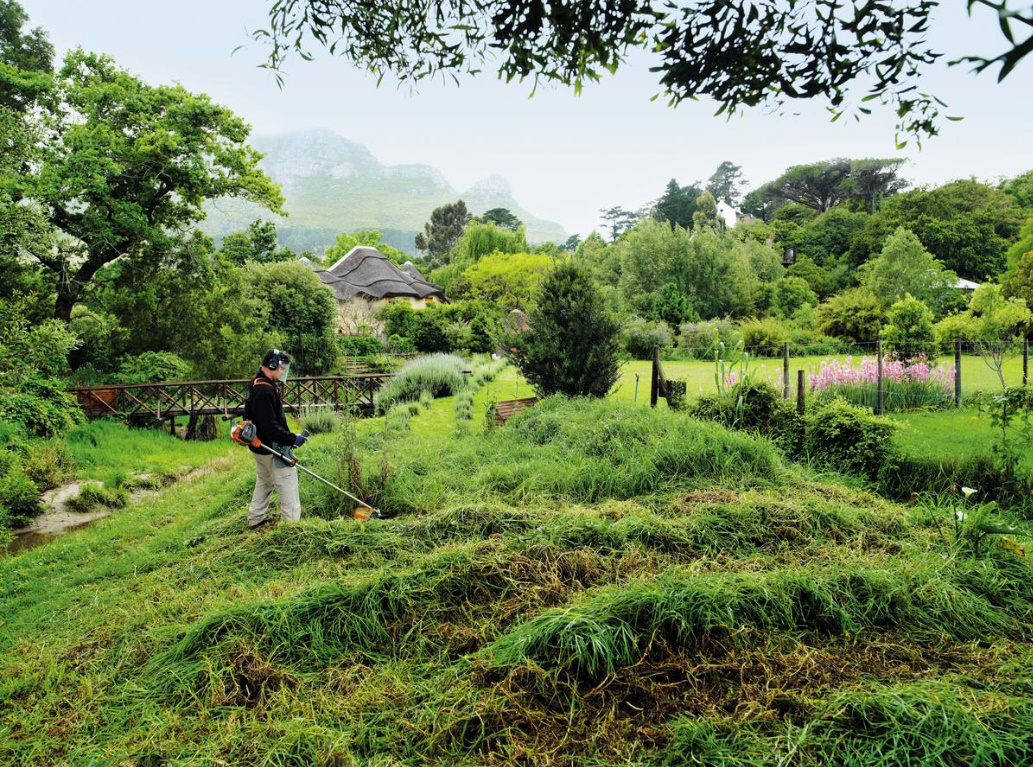
It turns out that the trimmer is not a replacement for a lawn mower, but a necessary additional item in the arsenal of an economic cottager.
If you need a lawn mower only to tidy up the edges of the lawn and mow small areas overgrown with weeds, pay attention to lightweight battery models (for example, Husqvarna 115 iL). To date, battery—powered equipment is the easiest to use and maintain, low noise and environmentally friendly. There is no need to think about refueling and complex mixing of oil and gasoline for a two-stroke engine, and you will not have to breathe exhaust gases. Inserted the battery, pressed the button — and go!
This model is compatible with all compact lithium-ion batteries and Husqvarna chargers. You can choose a battery that matches your scope of work. That is why the batteries are supplied separately from the tool. The basic models are designed for continuous operation for half an hour. And with the Husqvarna BLi200 battery, the trimmer will work for 1 hour and 15 minutes. As a rule, this is quite enough. If you need to continue working, then charge the battery in half an hour by charging the Husqvarna QC330. That’s enough time to take a break. And back to business.
If you plan to work with a lawn mower on a site where there is no electricity yet, you can use the Husqvarna QC80 car charger (80 watts), which can charge any Husqvarna battery “in the field” through the 12-volt output of the machine.
What type of lawn mower to choose
The main assistant in regular lawn care is a lawn mower. It is very important to choose the model exactly for your conditions, so the tool will cope with the amount of work, and you will work in a comfortable mode.
Non-self-propelled lawn mowers
If you have a small area of land occupied by a lawn, then you can take a non-self-propelled model: as a rule, they have a lower price. For example, the Husqvarna LC 153P is a model that allows you to choose one of three grass mowing modes: collection in the grass collector, distribution of crushed grass on the lawn surface (BioClip® mulching function) or simple ejection followed by manual harvesting of grass. Many Husqvarna models have such capabilities.
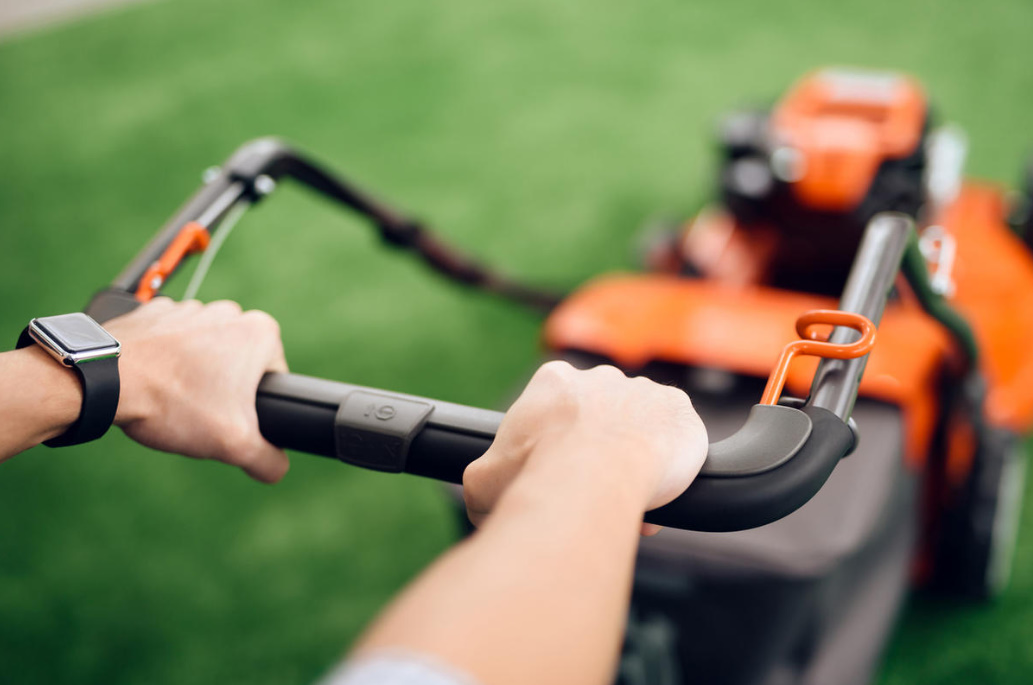
If you have a compact plot and there are rather narrow passages, then it makes sense to look at lawn mowers with a cutting deck width of up to 50 cm, for example, to the battery model Husqvarna LC 247I, whose working width is 47 cm.
Self-propelled lawn mowers
To work with a self-propelled lawn mower (these have a rear-wheel drive) you will spend much less effort. It does not need to be pushed, it goes at a given speed, which can be adjusted to your step. You only direct the unit. Self-propelled models (for example, the Husqvarna LC 153S gasoline lawn mower) will be useful on large areas of a simple or rather complex configuration.
If you need a self-propelled lawn mower for medium areas, pay attention to the characteristics of the battery model Husqvarna LC 353iV. Two batteries can be installed on it at once, which makes it possible to work up to an hour and a half without another charge.
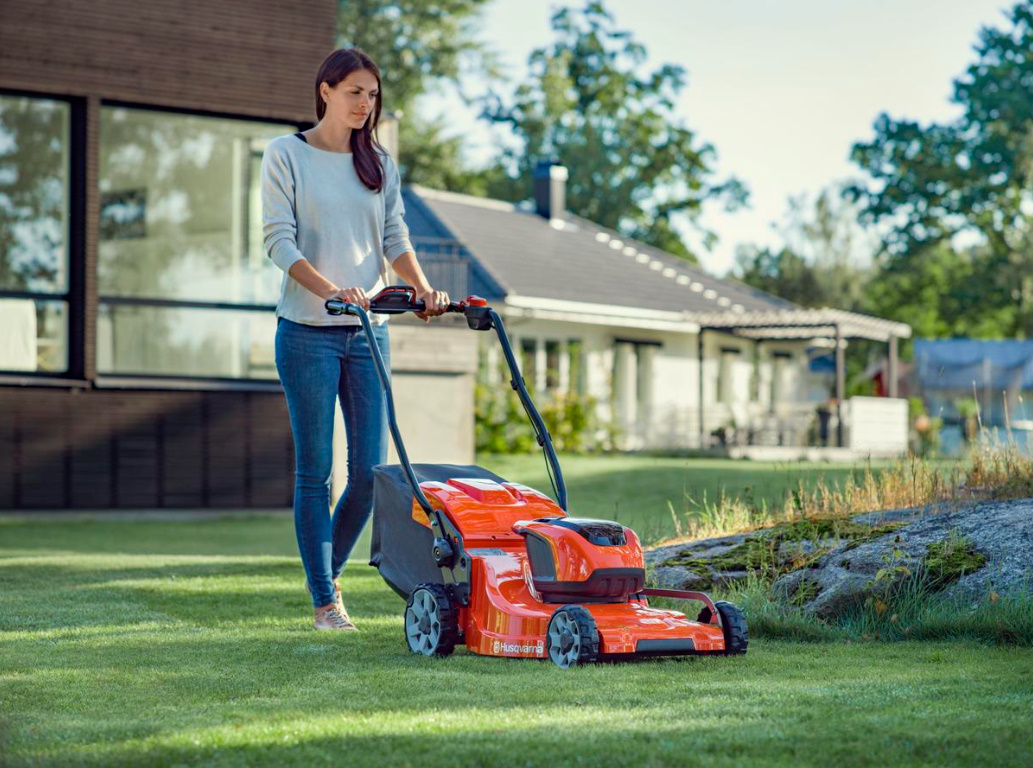
For the most difficult conditions, when the plot area is large and there are irregularities and slopes on it, a powerful self-propelled model is needed. Work on difficult terrain is also simplified by the increased diameter of the rear wheels and a powerful tread. The Husqvarna LC 353AWD all-wheel drive lawn mower has such functionality. The large width of its steel cutting deck (53 cm) will allow you to quickly cope with cutting grass on an impressive territory. It has a wide range of mowing height adjustment (9 levels in total) from 2.54 to 10.16 cm . This means that with it, both the first high haircut and mowing to a regular height are possible.
Robots
Those who dream of getting rid of the obligation to cut the grass once or twice a week should look at lawnmowers robots. The regularity of the haircut can be adjusted depending on the individual conditions of the site, the speed of grass growth and even the weather. When choosing a model, take into account, first of all, the area (this parameter is always specified in the description of the model) and the complexity of your site (the presence of bottlenecks, obstacles, slopes). For a standard six hundred square meters, the optimal choice will be the Husqvarna Automower® 305 robot lawn mower – a maneuverable and compact model with a special mode for cutting narrow aisles.
Be prepared for the fact that such an independent assistant costs more than an ordinary lawn mower. But it pays off with undeniable advantages: she cuts the grass herself, gets up to charge herself and continues to mow herself. It works silently, with perfect haircut quality, requires only minimal maintenance. At the same time, it is absolutely safe for children and animals that may be on the lawn during work.
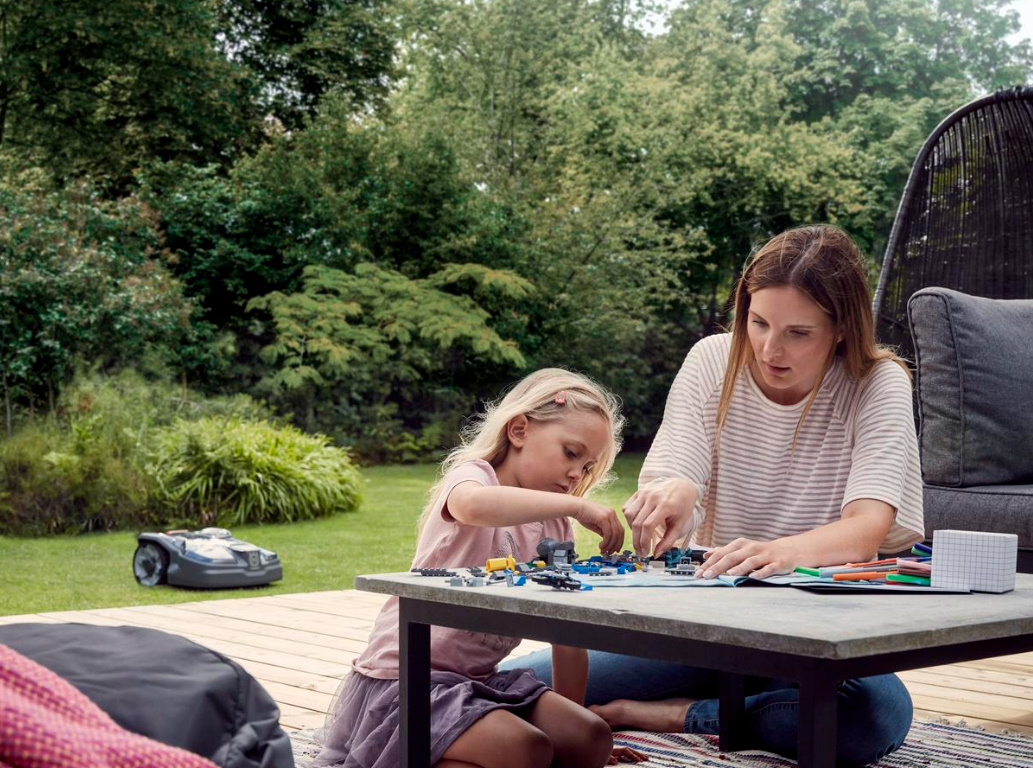
How to fix minor problems
With untimely care, and sometimes due to circumstances beyond our control, the lawn covering loses its attractiveness. It is important to identify the cause and fix the problem as soon as possible.
The grass has outgrown
If the herbage has exceeded the mark of 15 cm, do not cut it immediately to a height of 4-5 cm — mow it in stages. First, cut to a height of 10 cm, a week later — to a level of 7 cm, a week later — to a regular height.
The grass gets wet
This problem often occurs on heavy soils and is aggravated by excessive watering or rainy summer. That’s why a drainage pad and a slight slope are needed when setting up a lawn. If there is a local waterlogging due to too dense turf, aeration should be carried out and the excess grass combed out.
Yellow spots and bald spots
The causes of yellowing and loss of individual small areas of grass may be different — insufficient watering, pests, poor overwintering, local trampling, etc. First, identify the source of the problem, eliminate it if possible, and perform a reconnection.
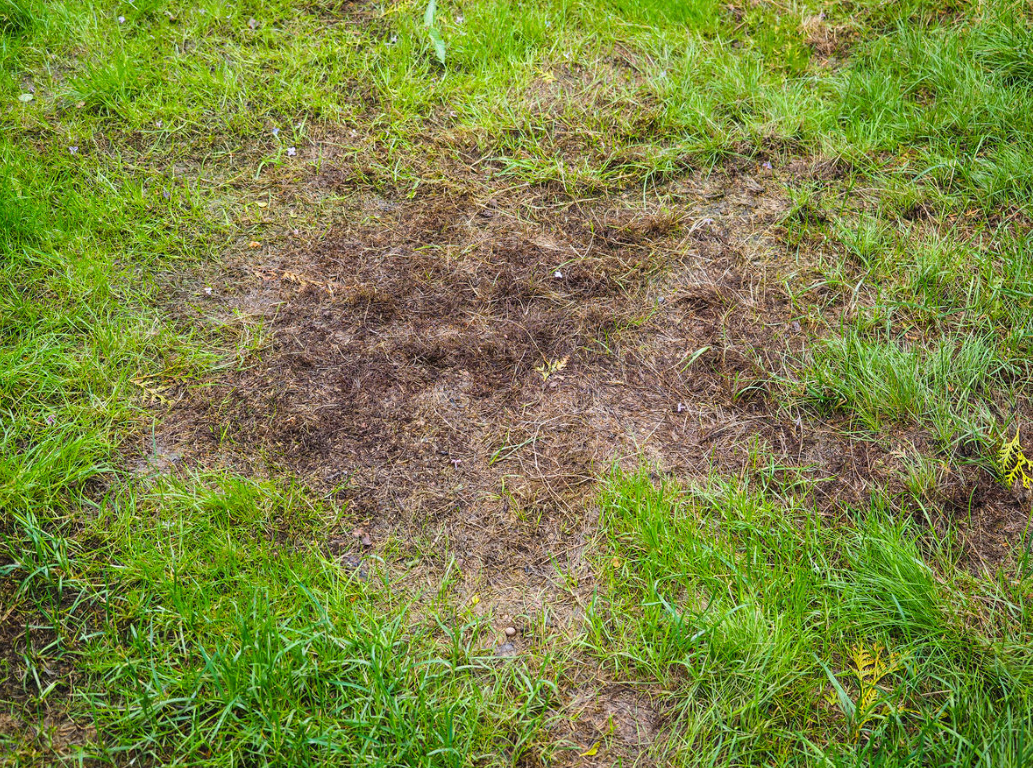
On the site to be repaired, it is necessary to remove the turf, clear the plant residues, pour the earth to the level of the lawn surface, sow and seal the seeds, water. It is recommended to sow the same or similar grass mixture, otherwise the growth rate of cereals and their color will differ from the rest of the coating. The removed fragment can be replaced with a piece of turf cut from a place where it is invisible and can be easily restored. There is also a way when the seeds are covered with a piece of jute burlap, through which the grass sprouts. The covering material is not removed, it simply decays over time.
Moles and worms
If moles have left piles on the lawn, then they need to be leveled. Weeds quickly settle on the raised loose ground, so it is impossible to leave molehills without attention for a long time. Moles, of course, need to be fought.
Smaller piles of loosened soil are also left by ants and earthworms (provided their large numbers). They also need to be leveled so that the coating does not deteriorate in these areas.
A green lawn loses its decorative effect due to a variety of reasons, but many can be corrected. We have named only a few of the most common.
